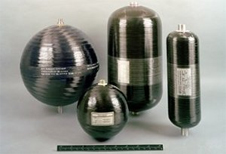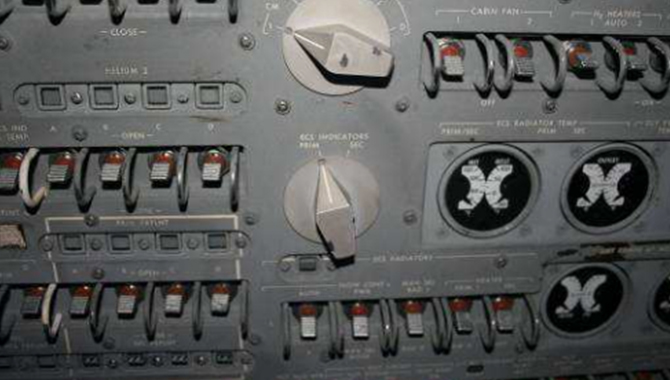November 24, 2009 Vol. 2, Issue 11
The Exploration Systems Mission Directorate’s Integrated Risk and Knowledge Management Portal has published a new knowledge-based risk on super lightweight fuel tanks that identifies critical non-destructive evaluation techniques in need of further development.

Composite Overwrapped Pressure Vessels from White Sands Test Facility. Photo Credit: NASA
Composite Overwrapped Pressure Vessel (COPV) technology, used primarily for propellant and pressurized storage, is ubiquitous in many aerospace and Department of Transportation applications because it provides a good weight to strength ratio. Safe and successful use of these vessels is critical to essentially every NASA spacecraft mission as well as commercial space ventures.
Carbon COPVs are highly susceptible to impact damage that could ultimately result in loss of life or mission failure. To address these risks, a NASA Engineering and Safety Center (NESC) team has identified several critical non-destructive evaluation (NDE) techniques in need of development, including: (1) detection of minor impact damage and correlation to reductions in burst pressure, (2) monitoring progression toward stress rupture failure and life prediction, and (3) integration of NDE into COPV production to ensure quality and manufacturing consistency. These NDE methods need to be developed and improved for mission assurance and public safety.
The Exploration Systems Mission Directorate’s (ESMD) knowledge-based risk (KBR) on Composite Overwrapped Pressure Vessels (COPV) draws on Shuttle, Space Station and Constellation risk records as well as interviews with key subject matter experts from Johnson Space Center, Kennedy Space Center, and White Sands Test Facility.
KBRs, an element of the Exploration Systems Mission Directorate’s (ESMD) integrated risk and knowledge management approach, are intended to fill knowledge gaps in risk management, systems engineering, engineering disciplines, and other communities. These lessons learned draw on ESMD and Space Operations Mission Directorate risk records and document “what worked or didn’t work” in terms of the mitigation effort. The lessons are appended to the original risk record in the ESMD risk management tool (Active Risk Manager, or ARM) and are also packaged in the ESMD Risk & Knowledge Management Portal. KBRs are accompanied by “video nuggets” — short video clips of subject matter experts explaining the context of the risk and any associated learning around how that risk was managed — as well as associated reports, documents and presentations.
View the KBR to learn more about the research and development of COPV technologies currently underway at NASA, how to identify the associated COPV risks, and how to develop comprehensive COPV risk mitigation plans. [Access to ESMD’s Integrated Collaborative Environment (ICE) is required.]






